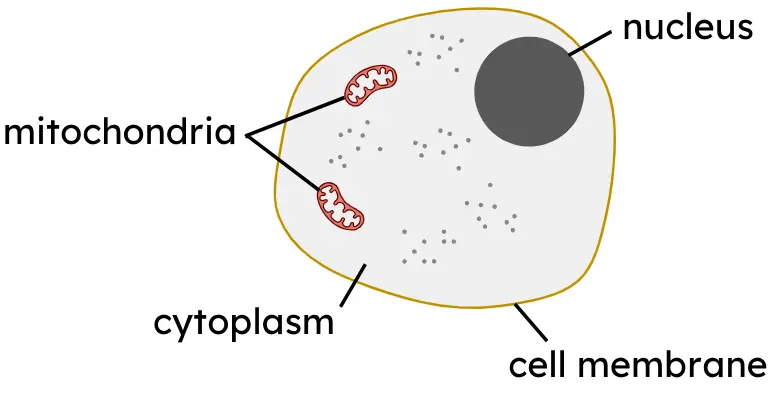Anaerobic cellular respiration in humans
I can describe differences between aerobic and anaerobic cellular respiration in humans.
Anaerobic cellular respiration in humans
I can describe differences between aerobic and anaerobic cellular respiration in humans.
These resources will be removed by end of Summer Term 2025.
Lesson details
Key learning points
- Anaerobic cellular respiration takes place without using oxygen.
- In humans, anaerobic cellular respiration produces lactic acid, which can cause muscle cramps.
- Word summaries of the reactants and products of aerobic and anaerobic cellular respiration in humans.
- Anaerobic cellular respiration takes place only in the cytoplasm of cells and does not involve the mitochondria.
- Anaerobic cellular respiration provides less energy than aerobic cellular respiration, but provides energy more quickly.
Keywords
Anaerobic cellular respiration - Anaerobic cellular respiration is a type of cellular respiration that does not use oxygen and takes place in the cytoplasm of cells.
Lactic acid - Lactic acid is a product of anaerobic cellular respiration in humans which causes muscle cramps.
Cytoplasm - The cytoplasm is the jelly-like substance inside a cell where chemical reactions of the cell take place.
Aerobic cellular respiration - Aerobic cellular respiration is a type of respiration that requires oxygen and takes place in the mitochondria and cytoplasm of cells.
Common misconception
Learners often assume there is only one type of cellular respiration (aerobic).
This lesson explores aerobic and anaerobic cellular respiration in humans.
To help you plan your year 9 science lesson on: Anaerobic cellular respiration in humans, download all teaching resources for free and adapt to suit your pupils' needs...
To help you plan your year 9 science lesson on: Anaerobic cellular respiration in humans, download all teaching resources for free and adapt to suit your pupils' needs.
The starter quiz will activate and check your pupils' prior knowledge, with versions available both with and without answers in PDF format.
We use learning cycles to break down learning into key concepts or ideas linked to the learning outcome. Each learning cycle features explanations with checks for understanding and practice tasks with feedback. All of this is found in our slide decks, ready for you to download and edit. The practice tasks are also available as printable worksheets and some lessons have additional materials with extra material you might need for teaching the lesson.
The assessment exit quiz will test your pupils' understanding of the key learning points.
Our video is a tool for planning, showing how other teachers might teach the lesson, offering helpful tips, modelled explanations and inspiration for your own delivery in the classroom. Plus, you can set it as homework or revision for pupils and keep their learning on track by sharing an online pupil version of this lesson.
Explore more key stage 3 science lessons from the Breathing and respiration unit, dive into the full secondary science curriculum, or learn more about lesson planning.

Licence
Starter quiz
6 Questions


Exit quiz
6 Questions





